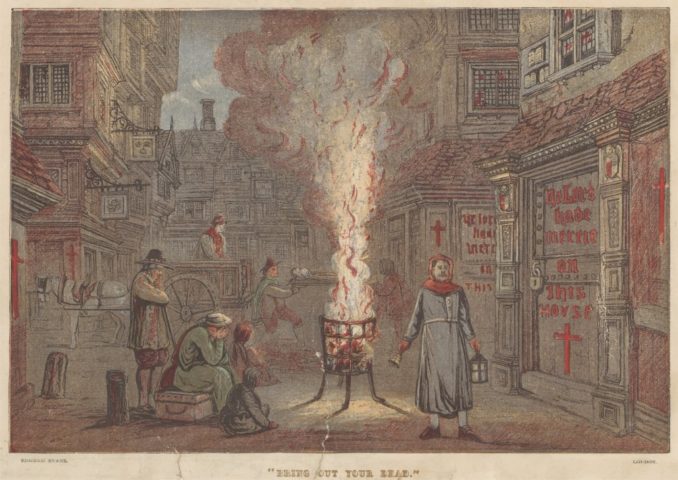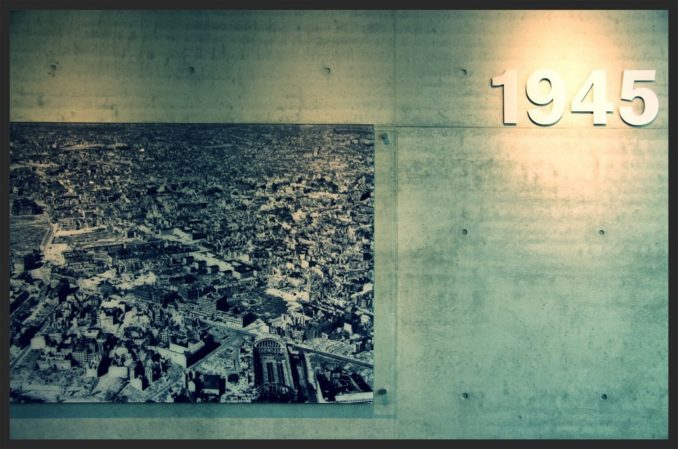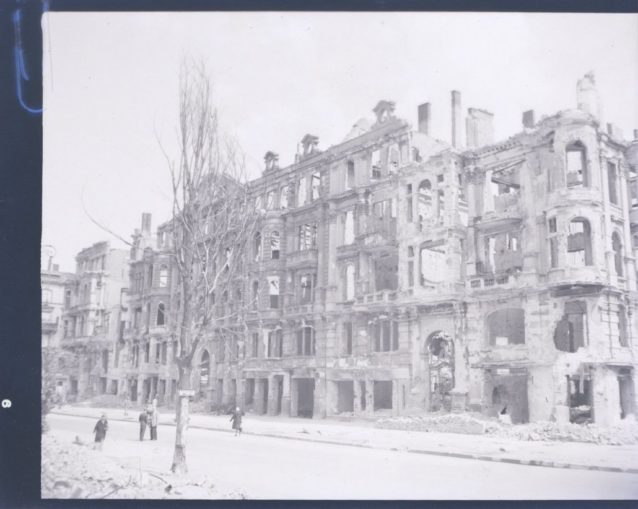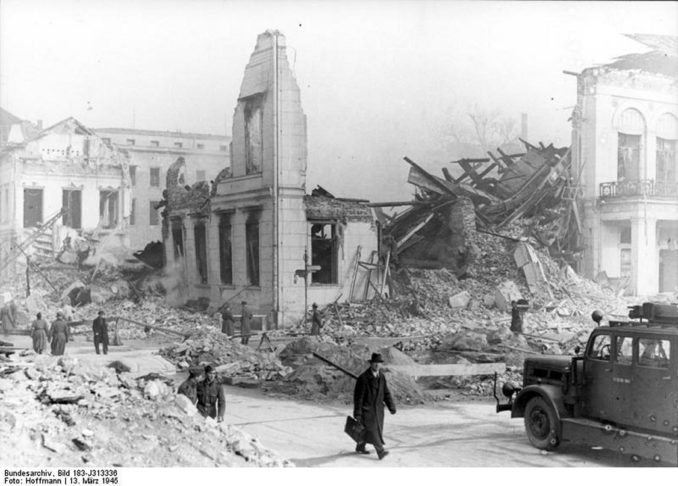This morning, you opened your phone and started scrolling. Your screen presented you with the usual updates: the nth wave of covid, the seemingly endless tussle in Ukraine, and all the usual suspects in the Middle East exchanging confrontational threats. You yawn, scratch (if a bloke) & start your day. Collapse gets old fast. The chances are the threat of imminent destruction won’t stop you from hurrying to work.
But to some, collapse can be a thrilling possibility. Keep on scrolling, and you’ll eventually come across its devotees: they include backwood fundamentalists, deep red-green radicals, apocalyptic cults, and pessimistic online doomers, to name just a few. The collapse of society can seem to hold an opportunity. Imagine no longer having to clock into work or pay taxes. Imagine money losing its importance when beanz and bullets hold all the value. Imagine those pesky scheming lawyers and bankers getting their comeuppance when their wealth belongs to those strong enough to take it. Imagine – if you will – a blank slate for those who see no place for themselves in the current order of our civilisation.
Collapse enthusiasts tend to share a basic implicit assumption: if society as we know it ceased to exist, they and their besties would be better off in some important way. Sometimes, social ills seem so entrenched that no other way out exists than for the system behind them to self-destruct. Others see the social order as fundamentally stacked against them, with any hope for advancement requiring its total reset.
These collapse scenarios and the restructuring of society that follows seem plausible. One might logically assume that the complex legal and economic structures that allow for property, debts, lending, and governments to redistribute resources are extremely fragile. It would certainly seem that a physical disaster sufficient to obliterate infrastructure and kill large swathes of the population would leave the survivors in an unrecognisable world of anarchy. But collapse is not a theoretical construct. Human history has seen both natural and man-made disasters many times before: the historical record offers us examples of deadly plagues, trade collapse, total war, and the dropping of atomic bombs. And contrary to popular expectation, the record of such disasters suggests that the legal and economic systems that we live under have, in fact, displayed amazing durability. It is very difficult to identify natural disasters or wars that lead to the sudden end of civilisation as it existed before—or even to a full collapse of everyday life.

The original uploader was Bunchofgrapes at English Wikipedia., CC BY-SA 3.0, via Wikimedia Commons
If you heard today that a plague was coming that would rapidly kill between 30 and 50% of the general population, you might reasonably expect this to lead to the collapse of society. It’s hard to see how obligations and social accounting could survive such a massive event. Some might even see it as a chance for a new beginning. But this catastrophe actually happened in the historical record, and when it did, the direct ancestor of our own society continued a remarkable level of its day-to-day functioning. The bibliography of any book about the Black Death in England is laden with references to tax receipts, court cases, and parish death records. Much of what we know about the plague comes from records generated by the continuous operations of the very institutions that one might expect to completely fall apart in a hyper-mortality event.
The English law courts sat with only minimal interruption even during the brutal first wave of the Black Death from 1348 to 1349. The Court of Common Pleas conducted its full end-of-year term in 1348, while the Court of King’s Bench sat uninterrupted at York. In 1349, the Court of Common Pleas continued regular operations at Westminster. The King’s Bench operated at Lincoln, remaining “robustly busy.” It appears that the courts were forced to adjourn only for May and June of 1349, the very peak of the epidemic. Evidently, the courts had busy dockets even as litigants, judges, solicitors & barristers succumbed to the plague left,right & centre. In fact, the very pace of the death was likely driving much of the litigation: property changed hands at an accelerated rate, heirs sued each other over their shares of unexpected windfalls, debtors died, and creditors disputed over who would seize the silver and furniture, general chattels & such. Arguments, legal nitpicking, and the cross-examining of claimants to estates went on as usual, even as the laden wagons of the municipal corpse collectors creaked past the courthouse windows. At the end of the process, the only result was paper in the form of writs and orders, bearing the wax seal of the court. The successful litigant would have taken these papers away, and traveled home through a surreal scene of fresh graves, shuttered homes, and people wandering the roads proclaiming the end of days. In all likelihood, the winner of the case would himself die later that year or in the next spring, and the process would repeat. What is missing from this grim picture is the expected widespread anarchy. If a manor house is still standing in 2023, the current occupant’s chain of title likely traces back to orderly inheritance proceedings conducted during the Black Death.
Law and governance did not just persist as usual during the Black Death. The power of both the state and the courts actively increased in response to the challenge, much as they have during modern disasters. The ancestors of today’s secured loan processes evolved rapidly during this time: “Penal bonds, punitive remedies under detinue of charters, and uses all came into vogue because their utilisation encouraged more members of the upper orders to stand by their commercial obligations.” Records show that by 1352 “the use of penal bonds increased dramatically, and they were also used to enforce debts.” The executive function of government also remained largely unimpaired by the Black Death. Between 1348 and 1349 it was recorded that many labourers, expecting the imminent end of the world, had absconded from their jobs, or were demanding greatly increased wages to do any work at all. In response to this disaster-holiday mentality, the Council of Edward III issued the Ordinance of Labourers in the June of 1349, which decreed that everyone under age 60 must work, and workers may not receive wages higher than pre-plague levels. The ordinance also imposed price controls on food and prohibited alms for able-bodied beggars. By 1351, a strengthened version of this ordinance was being actively enforced through legal prosecutions against violators, and the English state was largely successful in imposing mandatory employment, along with wage and price controls, during the remainder of the economic crisis.
So……… the Black Death did not bring on any Great societal Reset — in fact, survivors experienced the very opposite. In the chaos of mass death, the state enforced obligations to work and fulfill debts with increasing stringency. Eventually, labourers did gain financially from their increased bargaining power. But this was a slower process that took a generation or two to fully make itself felt, with no immediate dramatic reordering of society. There was only one road to escaping financial and social debts during the Black Death, and it was traveled by plague carts carrying bodies.

CC0 1.0.
Modern states have had no more trouble than those preceding them in keeping up business as usual under adverse conditions. At the close of the Second World War, Berlin was in ruins. Its residents underwent food rationing and the complete loss of luxuries like coffee and chocolate. Apart from a period lasting a few months, many essential employees and low-level bureaucrats continued to wake up, clock in, work, go home, and do it all again the next day. By 1946, reconstruction had put many of Berlin’s essential services back to work.


For those who stayed in the city, many features of life went on with remarkable continuity even in the face of wartime violence and destruction. A conductor who started his job in 1935 would likely have operated the streetcar, received a paycheque, and paid rent normally up until about April of 1945, despite the bombing of Berlin and intermittent destruction of the tracks. If he survived and emerged from the rubble, he was almost certainly back to work by 1946, transporting workers for the reconstruction efforts. He would deposit his paycheque into his account at the same bank and likely kept paying rent to the same landlord. It is likely that our conductor never missed more than one filing, at most, for any tax year. By the 1946 tax year, revenues were stable enough that the occupation forces could run balanced budgets for domestic costs. Despite the military defeat and a change in regimes, a number of bureaucratic bodies and obligations continued functioning after the war just as before. Pension schemes in particular showed a surreal persistence. In 2019, the German government was still paying Third Reich-era German state pensions to foreign citizens in a number of different nations. A decree signed by Hitler in 1941 had established payments for foreign volunteers of the Waffen SS. In an example of bureaucratic persistence, the post-war German government went on to pay them for decades.

As Berlin burned in April of 1945, Hitler died in his bunker and his country suffered catastrophic unconditional defeat. Yet the paper rolls of foreign volunteers were somehow preserved, transferred to the appropriate offices of Allied-occupied Germany, and in 1949 came under the jurisdiction of the newly-formed Federal Republic of Germany. Public employees somehow located thousands of foreign veterans in scores of foreign countries and began mailing out cheques drawn on the West German treasury. Our hypothetical conductor likely retired in the 1970s with the same pension plan he had signed up for in the Third Reich. Bureaucracies and other large institutions sometimes survive because of sheer inertia. Most people do not actually have better options than showing up to work, even when the paycheques stop. Afghanistan’s civil servants continued showing up for months after the Taliban victory despite not being paid. But in many cases, they also survive because they are actually performing important functions. Someone has to keep the lights on………

This image was provided to Wikimedia Commons by the German Federal Archive (Deutsches Bundesarchiv) as part of a cooperation project.
© DJM 2023



